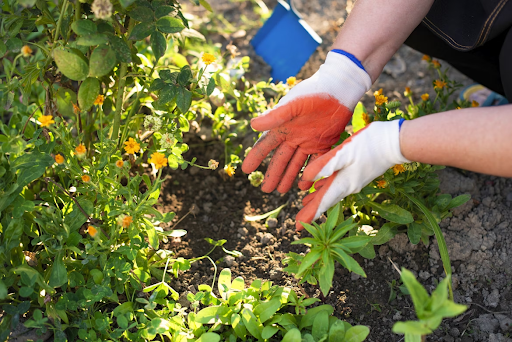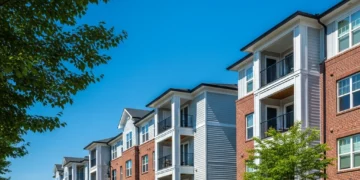Your outdoor space holds more power over your property’s value than most homeowners realize. A well-maintained garden can boost a home’s value, while a neglected yard becomes a financial liability that compounds over time. The mistake countless property owners make is treating garden maintenance as an optional weekend activity rather than essential property protection.
Small, consistent garden care precepts the need for expensive renovation projects down the road. What starts as skipping a few weeding sessions ends up requiring complete landscape overhauls, structural repairs, and thousands in unexpected costs.
The Link Between Neglect and Expensive Repairs
Garden neglect creates a domino effect that causes more than just aesthetic issues. Unchecked weeds compete with desirable plants for nutrients and water, eventually killing expensive landscaping investments. Overgrown shrubs and trees develop weak branch structures that become hazards during storms, potentially damaging roofs, windows, and vehicles.
Poor drainage is one of the most costly consequences of landscape neglect. When gutters clog with debris, irrigation systems fail, or grading becomes compromised by root growth, water finds new paths. These uncontrolled water flows can undermine foundations, crack patios, and create erosion that requires major-earthwork to repair.
Consider this common scenario: A homeowner ignores the small weeds growing between patio stones. Within two seasons, these weeds have loosened stones, allowed water penetration, and created frost damage that requires complete patio reconstruction.
Plant Health and Longevity Through Regular Care
Healthy plants are productive assets; sick plants are expensive liabilities. Regular pruning, fertilizing, and seasonal care can extend the life of shrubs and trees by decades. A properly maintained oak tree can thrive for hundreds of years, while a neglected one may require removal due to disease or structural problems. Prevent costly replacements with essential plant care including:
- Seasonal pruning to maintain structure and prevent disease.
- Proper fertilization based on soil testing and plant needs.
- Regular pest monitoring and early intervention treatments.
- Mulching to retain moisture and suppress competing weeds.
- Winter protection for sensitive species in harsh climates.
Neglected plants typically show signs of decline within 1-2 seconds. By the time visible problems appear, the damage often requires complete removal and replanting rather than rehabilitation.
Protecting Hardscapes and Outdoor Structures
A landscape maintenance guide can demonstrate how homeowners should protect hardscapes through regular maintenance. Patios, walkways, retaining walls and outdoor structures face constant damage from weather, plant growth and settling. Without consistent upkeep, these elements deteriorate rapidly and require expensive replacements.
Moss and algae growth might seem harmless, but they trap moisture against surfaces and create slip hazards. More critically, they indicate drainage problems that lead to frost damage and structural shifting. Root systems from nearby plants can crack foundations and lift pavement, requiring costly repairs that are often more expensive than the original installation costs.
Professional-grade sealers protect surfaces from moisture penetration, freeze-thaw cycles, and staining. Annual cleaning removes debris that cause drainage blockages and surface degradation. These simple practices can double the lifespan of outdoor investments.
Enhancing Curb Appeal Without a Remodel
A well-maintained garden delivers immediate visual impact without the disruption and expense of renovation projects. Strategic maintenance creates the impression of newness and care that appeals to both residents and potential buyers.
Fresh mulch, trimmed hedges, and vibrant lawns signal property pride and attention to detail. These elements cost a fraction of renovation projects while enhancing curb appeal. Regular edging of beds and walkways creates clean lines that make spaces appear larger and more intentional. By doing the following maintenance tasks curb appeal can be improved:
- Weekly lawn mowing and edging during growing seasons
- Seasonal flower rotations in key focal areas
- Regular hedge trimming to maintain shape and density
- Power washing of walkways and outdoor surfaces
Neighbors notice maintained properties, which can positively influence entire neighborhood values. Real estate professionals consistently report that well-maintained gardens help properties sell faster and for higher prices than comparable homes with neglected outdoor spaces.
Sustainable Practices That Save Money Over Time
Eco-friendly garden practices reduce both environmental impact and long-term costs. Composting kitchen scraps and yard waste eliminates disposal fees while creating valuable soil amendments. Mulching retains soil moisture, reducing irrigation needs and suppressing weeds naturally.
Smart irrigation systems prevent overwatering and reduce utility costs. These systems pay for themselves through water savings and improved plant health. Native plant selections require less water, fertilizer and pest control than non-native alternatives.
Rain gardens and permeable paving manage stormwater naturally while reducing runoff problems that can damage other landscape elements. These sustainable infrastructure improvements often qualify for municipal rebates that offset installation costs.
Regular Garden Care Saves Money
Small, regular garden maintenance efforts prevent the need for major renovation projects while protecting your property. Gardens are living assets that respond positively to consistent care and decline rapidly under neglect.
Treat garden maintenance as a long-term savings strategy rather than an optional chore. The time and money invested in consistent care pays dividends through avoided renovation costs, improved property values, and the satisfaction of maintaining beautiful outdoor spaces that serve your family for decades.












